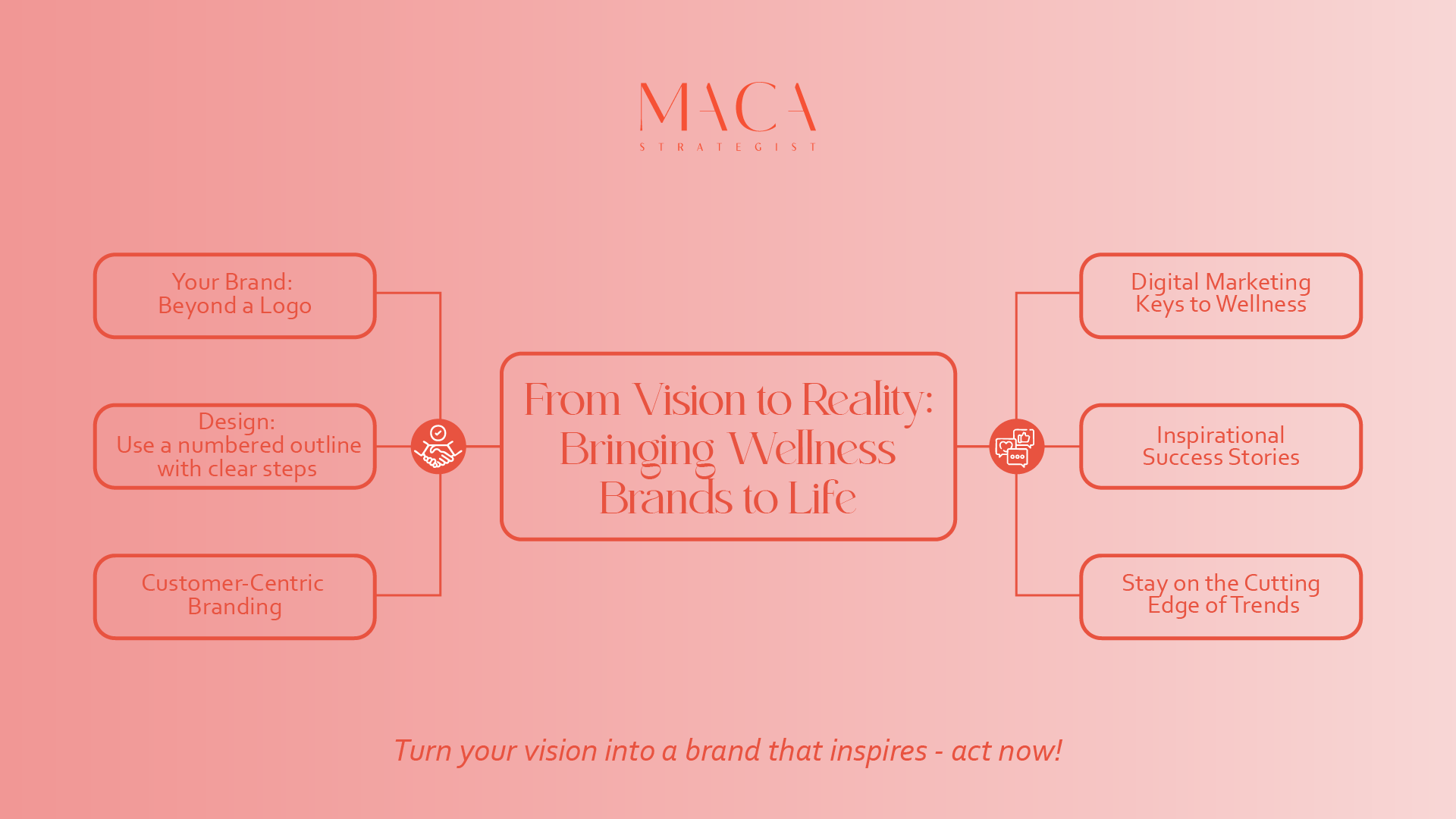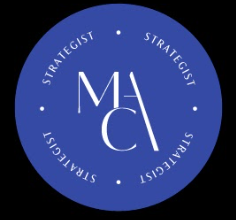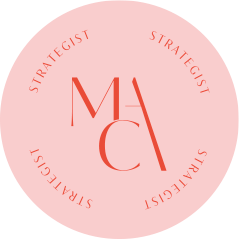Opening insights
In the wellness industry, branding is more than just a logo or a catchy tagline—it’s the essence of who you are, what you stand for, and the promises you make to your customers. A powerful brand identity builds trust, resonates with health-conscious audiences, and fosters long-term loyalty. In a world where wellness consumers are inundated with choices, having a clear and compelling brand can be the difference between thriving and getting lost in the crowd.
This is where expertise comes into play. A New York wellness branding agency helps businesses navigate the complexities of branding, crafting strategies that not only capture attention but also inspire action.
Let’s dive into the steps wellness brands need to take to go from vision to reality, creating identities that leave lasting impressions.
1. Understanding the Vision: What Wellness Brands Need
Every great brand begins with a vision. For wellness businesses, this vision is often rooted in a deep desire to help people lead healthier, more balanced lives. But how do you translate that passion into a brand that resonates with your audience?
Defining Core Mission and Values
Your mission is your north star—it guides every decision you make. Are you committed to promoting sustainable wellness? Do you prioritize mental health or advocate for eco-friendly practices? Defining these values is the foundation of your brand.
For instance, Patagonia’s mission to “build the best product, cause no unnecessary harm, and inspire solutions to the environmental crisis” has made it a standout brand in outdoor and wellness-oriented industries. Similarly, your wellness business must articulate a mission that reflects your unique value proposition.
Why Authenticity Matters
In an industry centered on health and well-being, authenticity is non-negotiable. Customers are drawn to brands that feel real, honest, and aligned with their personal values. Wellness consumers are particularly discerning—they can spot insincerity a mile away.
Being authentic means telling your story openly, acknowledging challenges, and showing the human side of your brand. It’s about building an emotional connection that fosters trust and loyalty.
Recognizing Your Unique Audience
Wellness is not one-size-fits-all. Your audience could include fitness enthusiasts, mindfulness practitioners, or holistic health advocates. Each group has distinct preferences, pain points, and goals. Understanding these nuances allows you to craft messaging and offerings that truly resonate.
For actionable insights on defining and reaching your audience, resources from the Small Business Administration (SBA) can be incredibly helpful.
2. Building a Strong Brand Identity
Your brand identity is the visual and emotional representation of your business. It’s how people recognize you, connect with you, and remember you.
Elements of a Powerful Wellness Brand
- Logo: The face of your brand. A well-designed logo communicates professionalism and trustworthiness.
- Color Palette: Colors evoke emotions. For wellness brands, greens and blues often signify health and tranquility, while vibrant hues can convey energy and vitality.
- Typography: Fonts should reflect your brand’s personality—whether it’s elegant, playful, or bold.
- Tone of Voice: Your brand’s tone—whether nurturing, empowering, or informative—should be consistent across all communication channels.
The Power of Storytelling
Storytelling is at the heart of every great brand. Sharing your journey, challenges, and successes creates a personal connection with your audience. For example, TOMS’ story of “one-for-one giving” resonates deeply, making customers feel like they’re part of a larger mission.
Your wellness brand might share stories of client transformations, community impact, or the inspiration behind your business. A New York wellness branding agency can help craft these narratives in a way that feels authentic and compelling.
Case Studies: Brands That Shine
- Lululemon: Known for its clean, minimalist design and empowering community events, Lululemon has built a lifestyle brand that extends beyond yoga apparel.
- Headspace: With its calming visuals and approachable tone, Headspace has made meditation accessible and appealing to millions.
3. Designing a Customer-Centric Brand Experience
A strong brand isn’t just about how it looks—it’s about how it feels. Creating a seamless, customer-centric experience is key to building loyalty.
Crafting the Customer Journey
From the first time a potential customer interacts with your brand to their tenth purchase, every touchpoint should feel cohesive and intentional. Whether it’s an Instagram ad, a website visit, or an in-person class, the experience must align with your brand’s identity and values.
The Role of User Experience (UX)
Your digital presence is often the first impression customers have of your brand. Websites should be intuitive, mobile-friendly, and visually appealing. Wellness apps should be easy to navigate, with features like progress tracking or personalized recommendations.
Feedback Loops: Listening and Adapting
Customer feedback is a goldmine for refining your brand experience. Regularly soliciting and acting on feedback shows customers that you value their input, strengthening their loyalty.
For best practices in UX design, check out resources from the Interaction Design Foundation.
4. The Role of Digital Marketing in Branding
Digital marketing is the engine that amplifies your brand’s voice, helping you reach and engage with your target audience effectively.
Amplifying Visibility and Engagement
Social media, email marketing, and paid ads are powerful tools for increasing brand visibility. A New York wellness branding agency can create tailored strategies that ensure your content reaches the right people at the right time.
Content Marketing: The Power of Value-Driven Content
Content marketing is about more than promoting products—it’s about providing value. Blogs, videos, and social media posts that educate, inspire, or entertain build trust and position your brand as a thought leader. For instance, a wellness brand might publish articles on nutrition tips, mindfulness exercises, or eco-friendly living.
Integrating SEO and Targeted Ads
SEO ensures your website ranks highly on search engines, driving organic traffic. Targeted ads, on platforms like Google or Instagram, allow you to reach specific demographics. Combining these strategies ensures maximum impact and ROI.
For expert tips on digital marketing, the HubSpot Blog offers valuable insights and best practices.
Branding is not just about creating a visual identity—it’s about crafting an experience, telling a story, and building a connection. By partnering with experts like a New York wellness branding agency, wellness businesses can transform their vision into reality, creating brands that inspire and endure.
5. Evolving with Trends in the Wellness Industry
The wellness industry is in a constant state of evolution, shaped by cultural shifts, technological advancements, and consumer demands. For wellness brands, staying ahead of these trends isn’t optional—it’s essential.
Key Trends Shaping Wellness Branding
- Sustainability as a Core Value
Consumers increasingly prioritize brands that champion sustainability. From eco-friendly packaging to carbon-neutral operations, wellness businesses are redefining their practices to align with environmental values. A strong brand communicates its commitment to sustainability clearly and authentically, building trust and loyalty. - Mental Health Takes Center Stage
The global conversation around mental health is reshaping the wellness landscape. Brands offering mindfulness tools, stress relief products, or holistic therapies must position themselves as supportive allies in this journey. This includes thoughtful messaging that destigmatizes mental health and provides actionable solutions. - Technology as a Wellness Driver
Emerging technologies like artificial intelligence (AI) and virtual reality (VR) are transforming how wellness brands engage with their audiences. AI-powered apps offer personalized health insights, while VR enables immersive experiences like virtual retreats or yoga classes.
Why Flexibility Matters
Trends change, but your brand’s core identity should remain consistent. A flexible branding strategy allows your business to adapt without losing its essence. Partnering with a New York wellness branding agency ensures you can pivot strategically while maintaining alignment with your mission.
The Role of Technology in Brand Interactions
Emerging technologies redefine customer experiences:
- AI for Personalization: Delivering tailored wellness plans or product recommendations based on user data.
- VR for Immersion: Offering virtual wellness tours or guided meditation sessions.
- Blockchain for Transparency: Providing secure, transparent insights into product sourcing and supply chains.
For more insights into industry trends, the Global Wellness Institute offers comprehensive research and forecasts.
6. Common Challenges in Building a Wellness Brand
Building a wellness brand comes with unique challenges, but with the right strategies, these obstacles can be transformed into opportunities.
Overcoming Industry Saturation
The wellness market is crowded, making differentiation crucial. To stand out:
- Focus on your unique value proposition (UVP). What sets your brand apart?
- Use storytelling to connect emotionally with your audience.
- Leverage niche marketing to target specific demographics, such as eco-conscious consumers or fitness enthusiasts.
Addressing Consumer Skepticism
The wellness industry faces scrutiny over misleading claims and lack of transparency. To build trust:
- Provide clear, evidence-based information about your products and services.
- Highlight certifications, partnerships, and testimonials.
- Share your journey openly, showcasing your brand’s authenticity and purpose.
Managing Resources Effectively
Budget constraints can hinder branding efforts. To maximize ROI:
- Prioritize high-impact strategies, such as digital marketing and SEO.
- Outsource tasks to experts, like a New York wellness branding agency, to save time and resources.
- Monitor performance metrics to ensure efforts align with goals.
For tools to streamline branding efforts, check out resources from the Small Business Administration (SBA).
7. Real-Life Transformations: Brand Success Stories
Transformation #1: From Local Gym to Wellness Lifestyle Brand
A neighborhood gym sought to expand its reach and rebrand as a holistic wellness provider. Collaborating with a New York wellness branding agency, they developed a fresh logo, launched a sleek website, and created engaging content around nutrition, fitness, and mental health. The result? A 200% increase in membership and a thriving online community.
Transformation #2: Revitalizing a Legacy Spa Brand
A long-established spa faced declining engagement due to outdated branding. By modernizing their visual identity and emphasizing their eco-friendly practices, they attracted younger audiences. Targeted digital campaigns led to a 50% rise in bookings within six months.
Transformation #3: Launching a New Wellness Product
A start-up offering plant-based supplements partnered with a branding agency to craft its identity. They created an immersive brand story, designed vibrant packaging, and used influencer marketing to build buzz. The product sold out within weeks of launch.
Lessons Learned
- Consistency across touchpoints strengthens brand recognition.
- Authenticity resonates deeply with wellness consumers.
- Partnering with experts accelerates growth and ensures professional execution.
For additional case studies, visit the American Marketing Association for examples of successful branding campaigns.

8. Actionable Steps to Bring Your Wellness Brand to Life
Building a successful wellness brand requires strategy, creativity, and execution. Here’s how to get started:
Step 1: Define Your Vision and Mission
Clearly articulate what your brand stands for and what you aim to achieve. This vision will guide every decision.
Step 2: Research Your Audience
Understand your target demographic’s needs, preferences, and challenges. Use surveys, focus groups, and data analytics to gain insights.
Step 3: Develop Your Brand Identity
Work with professionals to create a cohesive identity, including your logo, color palette, typography, and tone of voice.
Step 4: Build a Strong Digital Presence
Create a mobile-friendly website, engage on social media, and optimize your content for search engines. A New York wellness branding agency can help with SEO, design, and targeted marketing campaigns.
Step 5: Monitor and Adapt
Regularly track performance metrics and gather feedback to refine your strategy.
Leveraging Tools and Resources
- Use Canva for branding design.
- Utilize Google Analytics for performance tracking.
- Explore HubSpot for marketing automation.
Reflection
A strong brand is the cornerstone of success in the wellness industry. It’s not just about standing out—it’s about connecting deeply with your audience and inspiring them to engage with your vision.
Taking your brand from vision to reality requires expertise, strategy, and dedication. Partnering with a New York wellness branding agency can help you navigate this journey with confidence, creating a brand that resonates, inspires, and endures.
The time to act is now—your audience is waiting to connect with a brand that truly speaks to them. Let’s bring your vision to life together.








